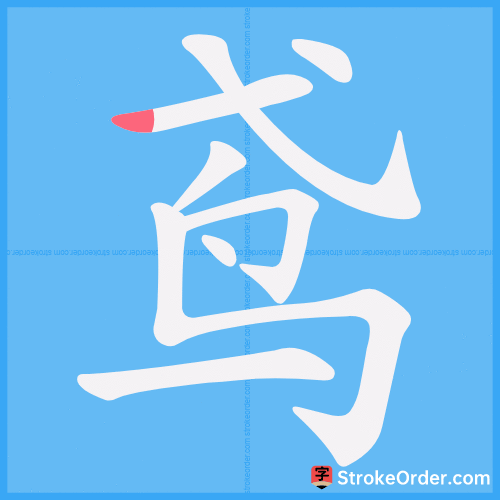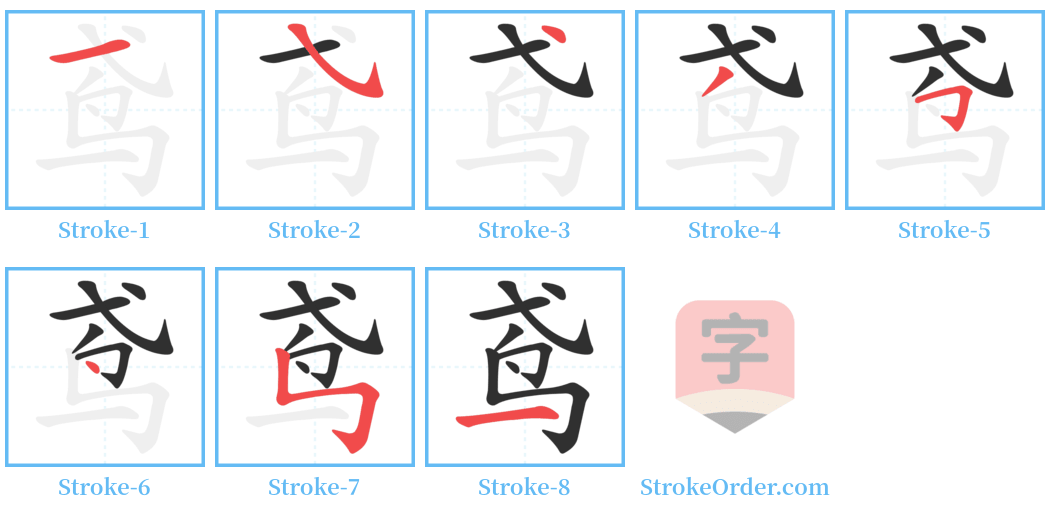鸢 Stroke Order
Animated Stroke Order of 鸢

Stroke Order Diagrams for 鸢

Step-by-Step Handwriting Guide for 鸢

Learn to Write Chinese Characters with Video Tutorials
Watch the video of writing the Chinese character "鸢", learn the correct stroke order (笔顺) of the character "鸢", and master the standard way of writing the character "鸢".
Free Printable Handwriting Practice with Stroke Order: 鸢
Printable Writing Practice Worksheet of "鸢" in Portrait Orientation (Tian Zi Ge)

Printable Writing Practice Worksheet of "鸢" in Landscape Orientation (Tian Zi Ge)

Information of 鸢
Pinyin
yuān
Radical
鸟
Strokes
8 strokes
Usage
★★★★
Definition
kite
鸢
yuān
名
1. A bird, belonging to the Accipitridae family; its head and throat are white, with a blue-tinted beak. The upper body is brown with a slight purple hue, wings are dark brown, the abdomen is light red, the tail is deeply forked, and all four toes have hooked claws. It preys on snakes, mice, lizards, fish, etc. (colloquially known as “old eagle”), also denotes kite (a type of paper toy).
2. A small type of hawk from the Accipitridae family, also known as "old eagle" (English: kite). It has long and narrow wings, very deeply forked tail, a weak beak, and its feet are suitable only for catching insects and small reptiles; it also eats carrion. This bird is known for its graceful and prolonged soaring in the sky.
引
1. From "Letters to Zhu Yuansi" by Wu Jun of the Liang Dynasty: "The kite flying high in the sky looks towards the peak to calm its heart."
例
- 鸢肩: refers to shoulders that rise like those of a kite.
- 鸢蹲: crouching like a kite; metaphorically refers to being talented but poor and in a difficult position.
- 鸢飞鱼跃: metaphorically signifies flourishing and thriving, where everything finds its place.
- 鸢肩羔膝: describes a humble appearance with raised shoulders and bent knees.
- 鸢肩鹄颈: describes the posture of someone deep in thought, with shoulders raised and neck stretched.
Input Method for 鸢
Pinyin
yuan1
Wubi
aqyg|ayqg
Cangjie
ippym
Zhengma
hsrz
Four Corner
43127
Unicode
U+9e22
Same Pronunciation Characters